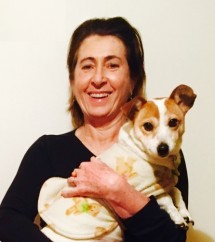[img_gallery][/img_gallery]
Join Petra O’Neill as she pays a visit to Sarawak, a city named for cats, and finds not only more than a few cats – and a cat museum! – but a most enjoyable and modern east Malaysian city.
Afort with turrets is not what you might expect to see as you cruise gently downstream by Sampan on the Sarawak River, but Fort Margherita built in 1879 by Charles Brooke, the second White Rajah, is just one of the many charms you will find here.
At the beginning of the 19th century, Sarawak was under the control of the Sultan of Brunei. After the appointment of an unpopular governor, the locals revolted. In 1839, James Brooke arrived in Kuching, put down the rebellion and became Rajah. His nephew Charles, though not quite the adventurer his uncle was, was nevertheless an excellent administrator expanding his rule to encompass all of Sarawak. After the Japanese occupation during World War II, Sarawak came under British rule until 1963 when independence was granted and it became part of Malaysia.
Kuching is the capital city of Sarawak on the island of Borneo, the third-largest island in the world. One of the most delightful cities in Southeast Asia, it offers a glimpse of what other Asian cities were once like. Laid back, gracious, and friendly with a population of 600,000, a walk along the streets, the most atmospheric being Jalans Gambier, India, and Carpenter, will reveal dragon-festooned Chinese temples and shophouses, a 19th-century South Indian mosque, and historic colonial architecture. Restaurants and open-air hawker stalls sell a variety of Asian cuisines, including the multi-layered rainbow-coloured egg sponge cakes known as kek lapis.
There are many museums, including the splendid Sarawak Museum with an exceptional ethnographic collection, the Textile Museum with hand-woven fabric made of gold or silver thread, an Islamic Museum, and a cat museum: after all, kuching means cat in Malay.
The road that runs along the river has long been known as Main Bazaar. This is the best place to shop for traditional tribal handicrafts, including blowpipes. A shopping highlight is the chaotic Sunday Market at Jalan Satok with its open air stalls selling an exotic array of fresh produce such as okra, ginger, red chillies, jungle herbs, spices, and bananas of all sizes and colours from yellow to dark red.
The appeal of Kuching, however, extends beyond the city. While half the population of Sarawak is Chinese or Malay, the other half is more tribal, including Iban, Bidayuh, Melanau, and Orang Ulu, each with rich cultural traditions, handicrafts, hand-woven textiles, beadwork, and wood carvings. Many still live in longhouses, a communal residence for an entire community who share an open plan living area.
You can go in search of the world’s largest flower, the Rafflesia, when they’re in bloom at Gunung Gading National Park, or visit the Semenggoh Wildlife Centre established to rescue orang utans from captivity, though given the centre’s vast size of 653 hectares, sightings are not guaranteed.
I went in search of the endangered proboscis monkey at Bako National Park, and just getting there was quite an adventure. After a bus ride, I experienced an exhilarating boat ride through Bako National Park, a compact part comprising seven complete ecosystems, including beach and cliff vegetation, heath, mangrove, peat, forests, and grasslands, representing the types of vegetation found in Borneo. Mangroves fringe the coastline and rocky headlands lead to secluded beaches. I trekked all day along trails trying but failing to do all 16 walks, or sight one proboscis monkey, and was sorry not to have stayed overnight as most visitors do.
In the 20 years since my first visit, many changes are evident. Kuching has evolved into a very pleasant modern city, while preserving its past, well deserving of several days’ stay. As I crossed the Sarawak River by riverboat, I wondered for how much longer the riverboats would continue. What will you do if they ever build a bridge? I asked. The boatman shrugged his shoulders. With plans now underway for a bridge to be constructed, let’s hope the enjoyable tradition of the riverboat will not be lost.
Getting There
Kuching is 1.5 hours from Kuala Lumpur (Malaysia Airlines, AirAsia, Malindo Air).
Getting Around
Taxis are plentiful and inexpensive. Buses are cheap, efficient and modern. The Visitors Information Centre has timetable and fare information. Riverboats criss cross the river. The Sarawak River Cruise’s sunset cruise is recommended. For Bako catch Bus No 1 to Kampung Bako and from there charter a boat. Local tour operators also offer trips to Bako. Purchase a map of the walking trails on arrival.
Information
Borneo Adventure, organizes ecologically sustainable tours. 55 Main Bazaar, Kuching: www.borneoadventure.com Sarawak Forestry has information on National Parks:
www.sarawakforestry.com Sarawak Tourism Website: www.sarawaktourism.com Tourism Malaysia Website: www.tourism.gov.my
Homepage highlight photo credit: Hoo Leng Siong, Flickr
Source: The Expat January 2014
Read more:
- Six Hotels You Should Check Out in Kuching
- 8 Things to Do in Sarawak
- Transforming Sarawak Under the Rule of the White Rajahs
What are your thoughts on this article? Let us know by commenting below.No registration needed.
"ExpatGo welcomes and encourages comments, input, and divergent opinions. However, we kindly request that you use suitable language in your comments, and refrain from any sort of personal attack, hate speech, or disparaging rhetoric. Comments not in line with this are subject to removal from the site. "


















